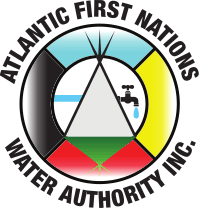Water Cycle
The Water Cycle: from the source to the tap and back again
Once water falls from the sky, either as rain or snow, the responsibility of the AFNWA begins.
It starts with an understanding of activities on the watershed and how they impact water quality; this could be everything from forestry operations to recreational vehicle use. Best practice calls for a watchful eye on watershed, based on the adage, quality in, means quality out.
The water is delivered to the water treatment plant, which AFNWA will operate with qualified Operators who will effectively and efficiently produce a water that meets the standards described in AFNWA’s Drinking Water Regulatory Guidance and Compliance Standards. After water leaves the treatment plant, it will flow through a series of pipes, reservoirs and pumping stations which must be kept in a state of good repair to ensure water quality is maintained as it is delivered to residents and businesses throughout the communities.
The water is delivered to the water treatment plant, which AFNWA will operate with qualified Operators who will effectively and efficiently produce a water that meets the highest standard in the land, the Guidelines for Canadian Drinking Water Quality, as published by Health Canada. After water leaves the treatment plant, it will flow through a series of pipes, reservoirs and pumping stations which must be kept in a state of good repair to ensure water quality is maintained as it is delivered to residents and businesses throughout the communities.
Once residents and businesses make good use of water for their needs, it is returned to the wastewater collection systems which must also be maintained to minimize disruptions in service including back–ups into homes or discharges to community streets and the local environment. The wastewater will ultimately be directed in a series of pipes and pumping stations to wastewater treatment facilities run by qualified Operators to ensure the effluent meets the highest standard in the land, the Wastewater System Effluent Regulations, as regulated through Environment and Climate Change Canada, before final discharge back to the environment.
Through evaporation and transpiration, water is then returned to the atmosphere and the cycle continues, as fully illustrated in the graphic below.

